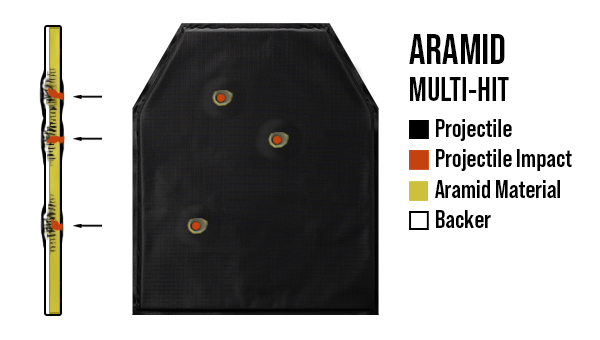What Happens When a Bullet Hits Soft Body Armor?
Soft body armor is a combination of woven and alternating layered fibers that, when combined in various thicknesses, create a net-like flexible fabric capable of stopping most modern handgun rounds.
What is Soft Body Armor?
Most are familiar with a product known as Kevlar, but few are familiar with its properties and composition. Kevlar is a main-brand name for trademarked aramid fibers - owned by Dupont Plastics.
Aramid fibers, short for aromatic polyamide, are a class of heat-resistant and ultra-strong synthetic fibers. They are used in aerospace and military applications, in marine cordage, marine hull reinforcement, and of course, for ballistic-rated body armor.
Aramid has high-heat resistant properties and an incredible tensile strength making it the ideal candidate for moderate ballistic protection.
The Pros of Soft Armor
- Flexibility: Soft armor, as the name implies, has no fixed form. Its flexible nature will conform to the small movements of your body when worn. In addition to its flexibility, soft armor is relatively lightweight, lending its usage to concealability and comfortable long-term wear.
- Protection & Capability: Soft armor is usually rated to NIJ standard 0101.06 Level IIIA, which means it's capable of addressing most handgun rounds up to and including a 230GR .44 Magnum @ 1,430 feet per second (FPS). In addition to this, all soft armor is multi-hit capable.
- Proven Track Record: Soft armor has a proven track record of saving lives, being possibly the widest field-tested form of body armor on the market. Police officers see the widest employment of this type of armor and most officers can attest that they know someone who was saved by their issued soft body armor.
What Happens When Soft Armor is Shot?
When soft armor is shot, the alternating layers of woven fabric become stretched and thinned by the projectile's surface area. Due to the tensile strength of the material, overall sheet thickness, and the unidirectional weaving of the fabric - the projectile is unable to separate all the layers and penetrate through the panel. However, this is contingent on various factors such as projectile composition, shape, mass, and velocity.

Some soft armor panels such as our S2 Soft Body Armor are capable of addressing special threat rounds that other manufactured panels are not. In addition to being NIJ 0101.06 IIIA rated, our S2 is able to stop the following; 300 blackout (subsonic), 5.7x28mm (Standard Ball FMJ from the Five-Seven handgun), and Liberty Defense 40GR 9mm at 2000 FPS. Despite this enhanced performance, almost all rifle rounds will defeat soft armor.
The Limits of Soft Armor
- Maximum Limit: As mentioned above, soft armor has a maximum limit. This limit is relevant to a projectile's mass over velocity equation, with the maximum “survivable limits” of that formula being the ballistics of a 44 magnum, or a 230GR projectile going at 1430 feet per second.
- Can’t Address Rifle Rounds: Soft armor is not capable of addressing any common rifle rounds like 5.56x45mm or 7.62x39mm. This means if your threat-assessment needs include rifle rounds - soft armor will not provide the level of protection needed and you will need to look into UHMWPE, steel, or ceramic rifle plate options to meet those concerns.
- Higher Level of Backface: In addition to being susceptible to all rifle rounds, soft armor tends to backface at a higher level than other armor types due to its pliable nature. This means that, although you can certainly stop multiple incoming rounds, or even stop rounds above the IIIA rating such as a 12GA shotgun, you may not see the benefits due to backface forces. Backface deformation’s force is best mitigated by the usage of a Trauma Pad when possible.
Conclusion
Is soft armor for you? The short answer: is yes.
While some rifle-rated plate-type selections like UHMWPE and ceramic can be higher in cost, soft armor is affordable enough that most can incorporate it into their daily lives. Soft armor should not be approached in a “Soft vs. Hard” manner, rather, it should be approached as the question of: Which one do you need for the situation at hand?
You can't take your rifle to the grocery store, but you can certainly take your concealed pistol. The same concept applies to armor; you may not be able to take your Invictus Plate Carrier with body armor into the grocery store, but you certainly can take your Concealment Plate Carrier with soft body armor panels under a t-shirt.
Soft armor is thin and light enough to be incorporated into your everyday carry (EDC) no different than a spare mag or folding knife. If you carry a handgun for EDC, you should strongly consider incorporating a low-profile, low-visibility soft armor system as well.
